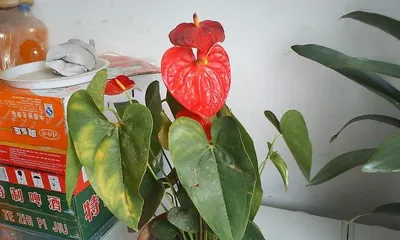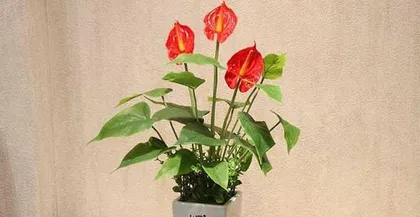Anthurium is one of the most common ornamental plants. Its beautiful and vibrant flowers make it a favorite among many. However, there is little known about its toxicity and the necessary precautions for indoor cultivation. Today, let's explore this topic together!

I. Anthurium Toxicity
All parts of the Anthurium—roots, stems, leaves, flowers, and fruits—contain toxic compounds. Prolonged contact or accidental ingestion can lead to various health issues, such as skin allergies, a dry mouth, and difficulty breathing.
II. Ideal Growing Environment for Anthurium
Anthurium thrives in a warm, humid, and well-lit environment. Generally, it prefers temperatures between 10°C and 25°C.

III. Optimal Temperature for Anthurium Care
When growing Anthurium indoors, it's crucial to control the temperature. Ideally, the temperature should not drop below 5°C or exceed 30°C to ensure healthy growth.
IV. Suitable Humidity for Anthurium Care
Anthurium care also requires maintaining adequate humidity. Ensure the air humidity is above 50%, paying extra attention to moisturizing during winter and in dry seasons.
V. Watering Precautions for Anthurium
Watering Anthurium should be done with a proper rhythm; it should not be too frequent or too sparse. Watering once a week is generally best, but be careful to prevent water from pooling at the bottom of the pot.

VI. Fertilization Methods for Anthurium
Anthurium should be fertilized monthly, preferably with a balanced fertilizer containing nitrogen, phosphorus, and potassium. However, always ensure the topsoil is dry before applying fertilizer.
VII. Pruning Techniques for Anthurium
As Anthuriums grow indoors, they may develop withered flowers and leaves that should be promptly removed. However, be careful not to prune the main stem and new shoots entirely.
VIII. Pest and Disease Control for Anthurium
Anthuriums grown indoors are also prone to pests and diseases, such as aphids and powdery mildew. In such cases, you can use plant protectants like erythromycin or malathion for control.
IX. How to Propagate Anthurium
Anthurium is a relatively easy plant to propagate. You can use methods like stem cuttings or division. Division is best performed in the spring or autumn.
X. Effects of Growing Anthurium with Other Plants
Due to its high toxicity, it is best not to place Anthurium with other plants. Other plants kept indoors for extended periods are particularly vulnerable to its toxic effects.
XI. Key Points to Note in Anthurium Care
When caring for Anthurium, avoid exposure to strong winds and direct sunlight. Also, remember to perform regular tasks like proper pruning and fertilizing.
XII. Suitable Planting Containers for Anthurium
For indoor Anthurium care, it's best to choose a larger planting container. This allows for better root growth and easier control of humidity and temperature.
XIII. Care Duration and Cycle for Anthurium
There are no strict rules for the duration of Anthurium care, but avoid providing more than 12 hours of light or allowing the plant to go without water for more than 10 days.
XIV. How to Assess Anthurium's Growth During Care
You can determine if your Anthurium is growing healthily by observing its leaves, flowers, and stems. If the leaves turn yellow or the flowers wilt, it's a sign that timely care is needed.
XV. Conclusion
Caring for Anthurium indoors involves many details, but with the right methods, you can help it thrive in your home. A final reminder: Anthurium is toxic, so please take precautions to protect your health!